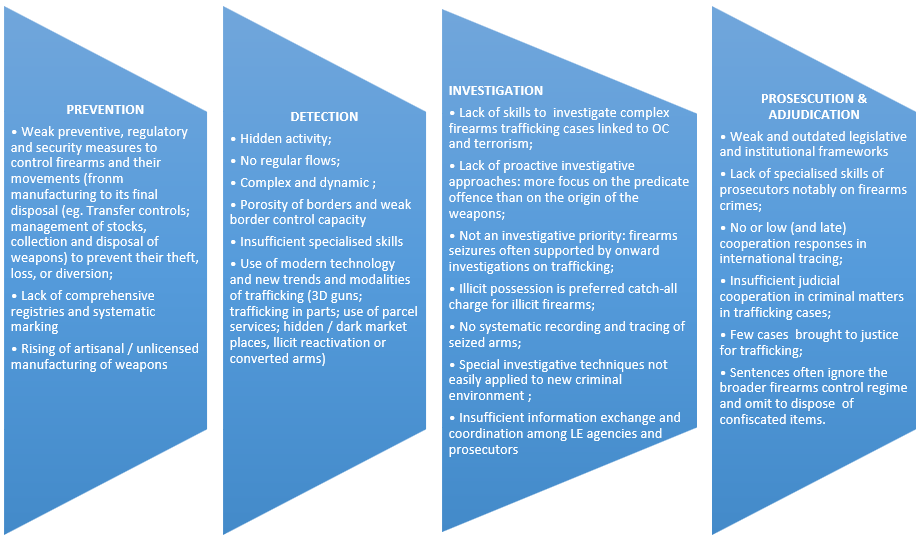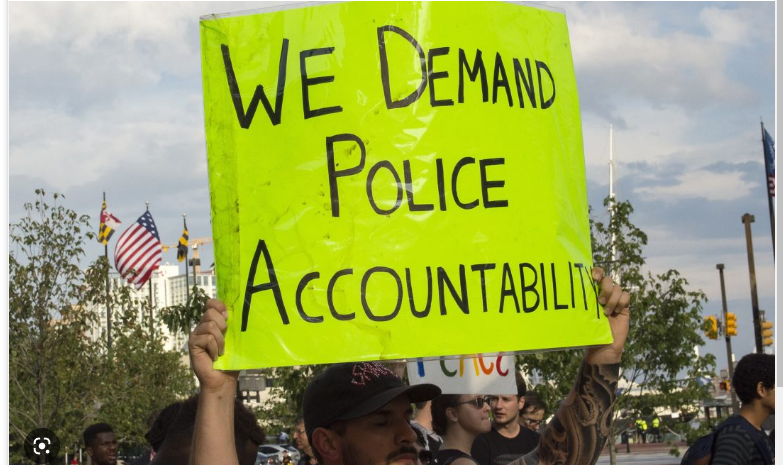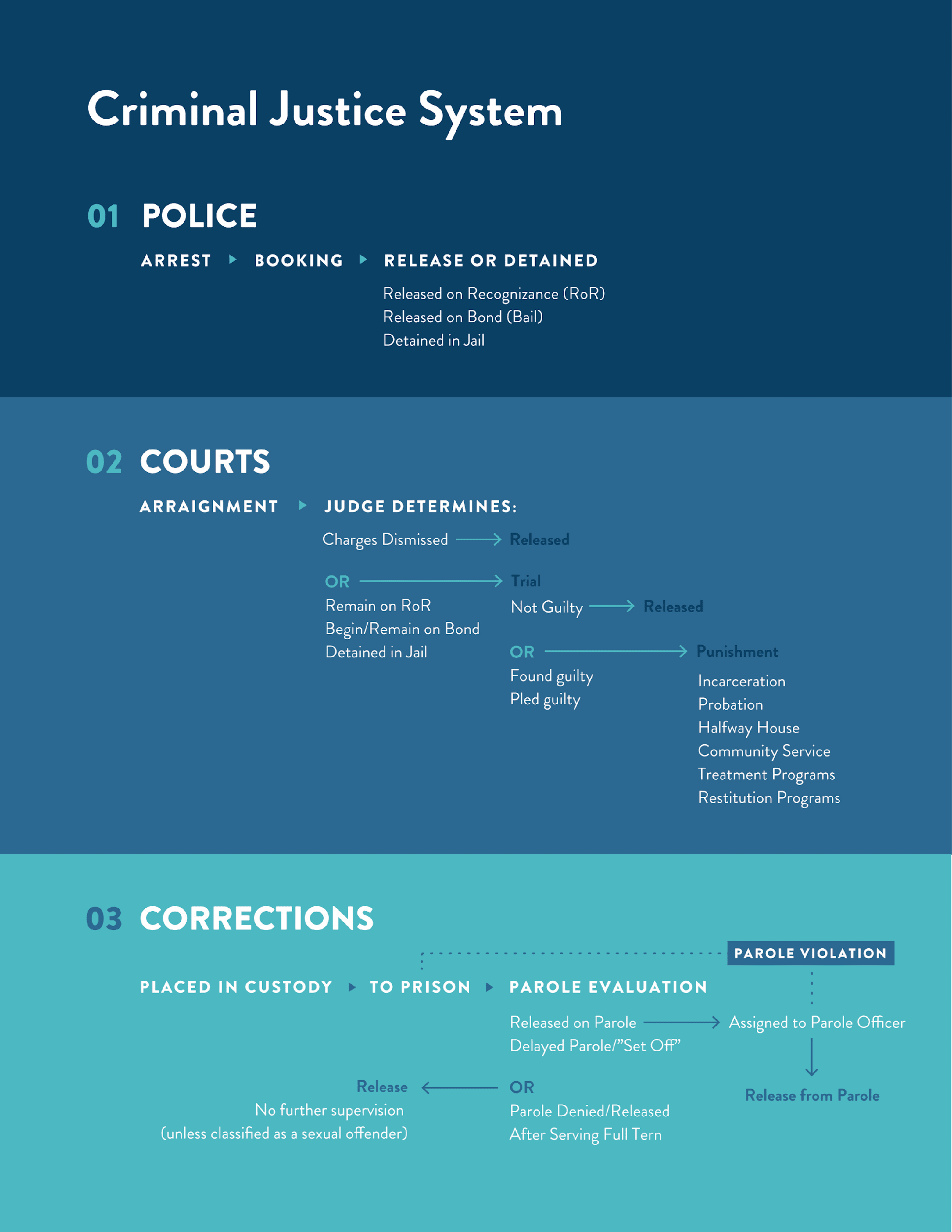Roles Played by US Police in Vast Legal Systems Under Criminal Justice
Introduction
The police are an essential unit of the administration of the criminal justice system. The reason is that the key roles of police include maintaining law and order, preventing crime, and ensuring the safety of the people, as depicted in Figure 1 below (Zulyadi, 2020). The US police is a critical security agency useful in a wide array of legal justice systems. For instance, police search and nub criminals to offer safety to the citizens in the US. Additionally, the police have been useful in judicial processes, such as in investigatory functions under the order of judges. Additionally, police are vital in the correctional system in the US, where they form part of the partnership in overseeing detained criminals in jails, remands, and in any government-enclosed facility guarding criminals (Cole et al., 2021). Police play different roles across the criminal justice system, such as investigating crime, reporting crime to judicial bodies, and executing powers to prevent crime, which are influenced by the need to protect the safety of US citizens.

Thus, the role of police in the US can be compared in terms of common law, judicial administration, and civil law legal systems. Common law is established by judges or statutory organs and governs the extent to which a person practices their ethical and moral perspectives. The police in the US maintain law and order by following the legislation regarding the limitation of one’s freedom as far as the other party is concerned. When it comes to judicial administration, the police work under a jury to offer investigation and witness roles when a case is being listened to or underway.
Comparing Police Role in Vast Legal Perspectives in the US
The Police and Common Law
The highest duty of the police is to safeguard freedom, preserve life and protect the constitutional rights of the citizens under the rule of law. That means police work is a democratic process comprising maintaining a specific way to respond to common law. Common law stipulates the limitations to which people are restrained from acting carelessly without factoring or considering the outcome of their actions to the general population (Cole et al., 2021). A person who participates in crime is liable for court prosecution for offenses that lie under common law.
The police deal with someone who commits an offense such as theft with violence at the crime scene. That may involve a series of occasions when the criminal is being nubbed before being interrogated for further action. The way police deal with criminals on the ground differs from other places, such as court remands and prisons (Daniel & Roxanna, 2022). The police produce evidence in court or a witness to ascertain the claim that one is a criminal and justify to the court through the police powers in discretion regarding the court case. The police can arrest and handcuff a person with a minor offense or major crime issue to prevent the escalation of the vice to the public.
The core duty under the common law, as set from the legal and moral subject, is to protect the public and detect criminal activities as one way of executing criminal justice. The police have legislative powers guarded by the parliamentary statutory to execute justice administration in the community through patrols, reception of dossiers of information, tips, and intelligence from a wide community network to prevent crime (Cole et al., 2021). Under the common law, the police assist in regulating crowds in public areas, alternating vehicles in areas that may lead to traffic jams, and so forth. The key factor in the matter is law enforcement by police, which deals with suspected criminals at the first stage before being taken to court.
In given instances, the police may take stern actions against perpetrators of the law, such as bandits, terrorists, and armed groups that paralyze peaceful occasions in society. The US has employed more than 0.9 million full-time police who work in different federal security agencies (Brayne & Christin, 2020). Under the criminal justice system, police are responsible for acting rationally, more so in incidents with less risk of loss of life to the citizens. At times, extrajudicial killings have put police work at stake, as criticized by civilian police oversight agencies due to actions that may be contrary to expectations, as Figure 2 suggests. The police execute extrajudicial killings when they overuse their power based on the common law stipulated by legislation and judicial and governmental factions (Evans, 2020).
There is a need to enlighten members of the police force in the US to adhere to calls under common law that all criminals are supposed to be treated as suspects or arraigned in court to ascertain the core reason why a person is perpetrating the law.

The Police in Judicial Administration
The court comprises a major element of the criminal justice system since that is where juries act as referees regarding the perpetration of law. The court requires the police to investigate the conclusion of the offense, the tabling of exhibits, and forensic evidence regarding a certain case being undertaken in legal proceedings. It is the work of the police to ensure that a criminal receives the trial that they deserve by acting neutrally and not insinuating the kind of punitive measure a person should get when they are in court (Morrow & Vickovic, 2023). The action of bringing law offenders to justice is key in the aspect of maintaining law and order under the common law. Therefore, the existence of common law allows police to have a fundamental role to play in judicial proceedings. Figure 3 shows the process followed in the criminal justice system.

It is important to note that unlike in common law, where the police decide what to do with the criminal, although guided by ethical principles, the judicial perspectives require police to follow the judge’s instructions to perform their duties. For example, a judge may instruct police to investigate a certain matter if it raises contention during court trials (Brayne & Christin, 2020). On that point, the police will launch an operation to assemble all factions that may help decide the case by accumulating meaningful facts, persons, and statutes that help a judge give a rational verdict.
During prosecution and judicial proceedings, the police help other stakeholders with logistical and technical duties. For example, a person who has their living style questioned may be brought to court when an arrest warrant is issued on them through the police. That happens more so to government officials who find themselves at the receiving end of national auditors who allege significant levels of misappropriation of public resources (Cole et al., 2021). Therefore, it is the work of the police to look for the suspect, inform them they are needed in court, and transport them to the premises to face trials over the alleged corruption or embezzlement of public funds.
The difference between police roles under common law and judicial proceedings is the liberty to act, where the latter has to follow systemic guidelines in the two criminal justice systems. During the court hearings, the police protect the suspect from public rage and prevent them from overacting or overlooking court processes. In that case, the police work collaboratively with juries to administer justice for a specific case (Morrow & Vickovic, 2023). Although police are not involved in distributing justice to offenders, they play a key part in the decisions that judges make regarding the case. The criminal justice system works effectively from the grounds in which police may be involved, such as arrests which give the foundation of justice delivery to the affected parties.
The police are useful in judicial processes since they are hired to collect information that helps determine wrongful convictions, appeals, and irrational sentencing. When police are directly involved in the administration of the criminal justice system, there is the capability of increased transparency due to the data derived from forensic research (Cole et al., 2021). In the US, there are judicial police tasked with assisting juries in finding essential information to determine the case. It is important to mention that the use of police in judicial realms applies common law aspects since judges see it legally wise for these officers to search homes and businesses and arrest people based on legislation from constitutional angles.
Legislative statutes include The Fourth Amendment, which requires police officers to have legal warrants when undertaking duties linked with judicial processes. For example, if one has a property that needs investigation, the police must obtain an official go-ahead from the court to check all the properties an individual possesses. If the person blocks the police from undertaking their judicial duty, the police have the liberty to apply force that does not harm the person to complete their investigations. Under the common law, that power would be based on their discretion (Brayne & Christin, 2020). Therefore, the police work differently depending on the areas of duty and the legal system under execution.
Police Roles in Correctional Services in the US
Law enforcement has witnessed significant collaboration rates between the police and the prison wardens in the corrections system. The police-corrections partnerships have yielded an advanced level of crime reduction due to the performance of functions stipulated under the common law, judicial elements, and other legal systems. There has been the implementation of community policing programs that solve predicaments within society hence lowering crime levels. An example of these partnerships includes enhanced supervision partnerships that comprise joint oversight of selected offenders on parole (Evans, 2020).
Additionally, that is seen in information sharing and training, which is meant to combat crime levels within the necessary legal realms. Offenders selected for these training types are considered at high risk or perceived to be criminally active. In this case, these individuals are deterred from committing new crimes or having a technical violation of the law whereby access to basic services o resources may be considered.
The other way police collaborate in correctional perspectives is through fugitive apprehension units. That involves locating and apprehending people who have escaped from parole supervision. In certain cases, these individuals may have outstanding arrest warrants from the court for breaching laws. When comparing police workability in terms of different legal systems in the US, the latter forms related factions within each other (Cole et al., 2021). For instance, common law calls for handling incarcerated individuals according to legislative and judicial terms. If a person is found guilty of intent to commit a further crime, they are taken through court proceedings under the criminal justice system, specifically judicial service administration. Thus, police can be useful in all legal systems depending on the matter at hand at a given time.
The role of police officers in corrections systems is evident through information-sharing partnerships. There is always an arrangement between them and prison wardens about exchanging information for individuals who may be of particular interest to them (Evans, 2020). For instance, police gang units can supply federal or state prison officials with information about gang associations of offenders, which may escalate, raising security issues not only in their areas but also in the general community. When released, any offender who may be dangerous to society is often described through collaboration between police and prison officials by creating alerts that may improve safety (Cole et al., 2021). This approach is similar to the execution of police powers through common and criminal laws since it employs basing actions on the state or federal stand on specific actions that may show criminal moves. The framework in which police collaborate with prison officials is slightly different for judicial administration, especially in courts, since they do not with specific court orders when reviewing specific individuals since the offender is already incarcerated.
The challenge of the roles of police in corrections systems makes a difference in how the entire matter is experienced. In partnerships between police and correctional officers, the benefits may be few, and a cold war could occur since both the police and prison officials are law enforcers. Unlike the court system, where a jury will have a higher voice than the police due to the jurisdiction and nature of the position, a collaboration between police and officers in prison may be dragged by the issue of avoiding accountability (Daniel & Roxanna, 2022). In that case, intelligent work may drag the partnership from miscellaneous errors while working together.
Conclusion
The criminal justice system covers many perspectives, including the courts, the police, and the corrections systems. The police have been key in the administration of criminal justice through the articulation of common law, undertaking duties related to the judicial system, and participating in corrections. The police can arrest and prosecute a person who has committed a crime in a court of law for legal proceedings. Through the common law, police know when to arrest based on the offense committed by a person and the legal provision that accompanies the same. In the US, the police have been phenomenal in the court system by helping the judge investigate a certain case and providing evidence that can be used to guide the course of action for juries. The police have formed partnerships with prison officials to exchange information and enhance supervision for incarcerated people who may have a possibility to perpetrate the law. Additionally, through fugitive apprehension units, police locate and apprehend individuals who have fled from probation.
References
Brayne, S., & Christin, A. (2020). Technologies of crime prediction: The Reception of algorithms in policing and criminal courts. Social Problems, 68(3), 608–624. Web.
Cole, G. F., Smith, C. E., & DeJong, C. (2021). Criminal justice in America. Cengage Learning.
Daniel, N., & Roxanna, D. (2022). Navigating the criminal justice system. Experiences of Criminal Justice, 4(7), 172–202. Web.
Evans, G. W. (2020). Analytics and criminal justice systems. Multiple Objective Analytics for Criminal Justice Systems, 32(9), 25–58. Web.
Morrow, W. J., & Vickovic, S. G. (2023). Exploring perceptions of police legitimacy: The role of family, friends, and procedural justice. Criminal Justice Review, 3(4), 479–593. Web.
Zulyadi, R. (2020). Police’s role in the investigation process of fraud criminal act of civil servants’ candidate. Britain International of Humanities and Social Sciences (BIoHS) Journal, 2(2), 403–411. Web.
